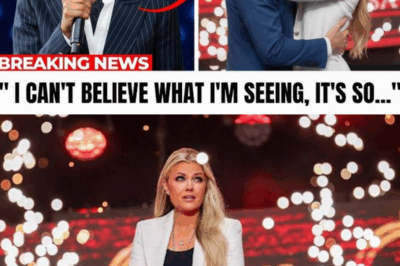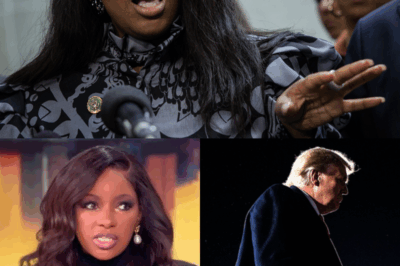Late-night television has long been a cornerstone of American entertainment, serving as a platform for comedy, celebrity interviews, and cultural commentary.
Over the years, the genre has evolved, reflecting shifts in audience preferences, the media landscape, and the broader cultural zeitgeist.
However, in recent years, late-night television has faced a significant decline, both in viewership and cultural relevance.
At the center of this transformation is Jimmy Kimmel, a host whose trajectory mirrors the challenges facing Hollywood’s traditional entertainment model.
As Kimmel’s show struggles to maintain its footing amid declining ratings, affiliate pushback, and advertiser skepticism, his story serves as a case study in the pitfalls of politicization, audience alienation, and the changing dynamics of media consumption.

The Rise and Fall of Jimmy Kimmel
Jimmy Kimmel’s career in late-night television began with promise. Known for his sharp wit and relatable humor, Kimmel quickly established himself as a leading figure in the genre.
His show, Jimmy Kimmel Live, became a staple of ABC’s programming, drawing millions of viewers and earning critical acclaim.
In its early years, Kimmel’s appeal lay in his ability to connect with audiences across the political spectrum, offering comedy that was lighthearted, inclusive, and entertaining.
However, this apolitical approach began to shift in the mid-2010s, particularly during Donald Trump’s presidency.
Like many of his late-night peers, Kimmel embraced a more overtly political tone, using his platform to critique Trump and champion progressive causes.
While this shift resonated with some viewers, it alienated others, particularly conservatives and moderates who felt excluded by the increasingly partisan nature of Kimmel’s content.
The decision to feature only one conservative guest, actor James Woods, over a three-year period underscored the show’s lack of ideological diversity and fueled accusations of bias.
This politicization came at a cost. Over the past decade, Kimmel’s ratings have plummeted, with his show losing 72% of its viewers in the key demographic.
This decline is not just a reflection of changing viewing habits—it is a direct result of Kimmel’s alienation of conservative and moderate audiences.
In an era where streaming platforms and alternative media have given viewers more options than ever before, Kimmel’s one-sided approach has made his show increasingly irrelevant.
The Affiliate Backlash

The decline in Kimmel’s ratings has not gone unnoticed by ABC’s affiliates. Sinclair and Nexstar, two of the largest broadcast station owners in the United States, have reportedly expressed concerns about Kimmel’s polarizing content.
Together, these companies control 70 ABC affiliate stations, representing a significant portion of the network’s reach.
Their reluctance to air Jimmy Kimmel Live highlights the growing disconnect between Kimmel’s progressive rhetoric and the values of the audiences these affiliates serve.
This pushback has created a standoff between ABC and its affiliates, with Sinclair and Nexstar reportedly demanding political parity in Kimmel’s guest lineup as a condition for airing the show.
While this request underscores the affiliates’ desire for balance and inclusivity, it presents a logistical challenge for Kimmel, whose guest roster has historically skewed heavily toward Hollywood celebrities—most of whom lean left.
The inability to meet this demand reflects the broader challenges facing late-night television, as hosts struggle to navigate the increasingly polarized media landscape.
The Advertiser Exodus
Compounding Kimmel’s challenges is the growing skepticism among advertisers. Late-night television relies heavily on advertising revenue, and the loss of advertiser support can be devastating for a show’s viability.
Kimmel’s polarizing content and declining ratings have made him a risky investment for advertisers, many of whom are wary of being associated with controversy.
This exodus of advertisers has further strained the show’s finances, raising questions about its long-term sustainability.
The reluctance of advertisers to support Kimmel reflects a broader trend in the media industry.
As audiences become more fragmented and polarized, advertisers are increasingly cautious about aligning themselves with divisive content.
This shift underscores the importance of balance and inclusivity in entertainment, as creators must navigate the delicate balance between artistic freedom and audience appeal.
The Hulu Option
As Kimmel’s contract approaches its expiration in August, speculation has grown about the future of his show.
One potential solution is to move Jimmy Kimmel Live to Hulu, Disney’s streaming platform.
This move would allow Disney to preserve Kimmel’s brand while reducing the risks associated with airing his show on public airwaves.
However, this transition is not without its challenges. Hulu’s subscriber base is already under pressure, with Disney facing criticism for raising subscription prices and failing to deliver compelling content.
Adding Kimmel to the platform could exacerbate these issues, further alienating subscribers and undermining Hulu’s appeal.
The Hulu option also raises questions about the future of late-night television as a genre.
As streaming platforms continue to dominate the media landscape, traditional late-night shows are struggling to remain relevant.
Moving Kimmel to Hulu would signal a shift away from the traditional late-night format, potentially paving the way for a new era of streaming-based comedy and commentary.
The Legacy of Bob Iger

The challenges facing Kimmel are emblematic of the broader struggles facing Disney under Bob Iger’s leadership.
Iger, who returned as CEO in 2022, has faced criticism for the company’s declining stock performance and inability to adapt to changing market conditions.
The controversy surrounding Kimmel has added to Iger’s challenges, as he grapples with the need to balance artistic freedom with corporate responsibility.
As Iger prepares to step down, his handling of the Kimmel situation will likely shape his legacy.
If Iger chooses to renew Kimmel’s contract, he risks further alienating affiliates, advertisers, and audiences.
If he decides to move Kimmel to Hulu, he must contend with the financial and reputational risks associated with the transition.
Either way, the decision will have far-reaching implications for Disney’s future and the broader entertainment industry.
The Future of Late-Night Television
The decline of Jimmy Kimmel Live is part of a larger trend in late-night television. As audiences become more fragmented and polarized, traditional late-night shows are struggling to maintain their relevance.
Hosts like Greg Gutfeld, who has embraced a conservative approach on Fox News, have demonstrated that there is a demand for ideological diversity in the genre.
However, the reluctance of networks like ABC to adapt to this reality has left them vulnerable to criticism and declining viewership.
The challenges facing Kimmel highlight the importance of balance and inclusivity in entertainment.
Comedy has the power to bring people together, but it can also drive them apart when used as a tool for ideological warfare.
Kimmel’s decision to prioritize partisan commentary over universal humor has cost him not only his audience but also his reputation as a comedian.
Conclusion
Jimmy Kimmel’s struggles are a reflection of the broader challenges facing Hollywood’s traditional entertainment model.
As audiences demand more from their entertainers, creators must adapt or risk becoming obsolete.
For Kimmel, the opportunity to rebuild his career lies in returning to his roots as a comedian who can make people laugh without dividing them.
Whether he chooses to take that path remains to be seen—but one thing is certain: the era of one-sided late-night television is coming to an end.
As ABC, Disney, and Kimmel grapple with the fallout, the future of late-night television hangs in the balance.
The decisions made in the coming months will shape the genre’s trajectory and determine whether it can adapt to the changing dynamics of media consumption.
For Kimmel, the choice is clear: evolve or fade into irrelevance. The stakes have never been higher, and the clock is ticking.
News
💔 “SHE DIDN’T PLAN TO BE A HERO — SHE JUST COULDN’T WALK AWAY.” 🌧️ When Rachel Maddow landed in Jamaica to cover the aftermath of Hurricane Melissa, she expected devastation. What she didn’t expect… was her. A little girl, barefoot in the wreckage, clutching a soaked teddy bear and whispering one word: “Mama.” Reporters looked away. Cameras kept rolling. But Maddow — silent, trembling — stepped forward. That night, she stayed. Days later, she signed the papers that changed both their lives forever. Now, as the world reacts to her unexpected act of love, one haunting question remains: Was this journalism… or destiny?|KF
1. The Storm That Took Everything The storm had no mercy. Hurricane Melissa tore through Jamaica with winds that howled…
😱 “NO CAMERAS. NO PRESS. JUST ACTION.” 💥 When Hurricane Melissa left Jamaica in ruins, everyone expected statements — not silence. But that night, Rep. Jasmine Crockett made a call no one knew about. Hours later, a private shipment — blankets, medicine, and water filters worth $500,000 — quietly left U.S. soil. No press release. No credit. Just a note inside the first box that made rescuers burst into tears. Now, the world wants to know: what did she write?|KF
When Hurricane Melissa finally loosened its grip on Jamaica, what remained was not silence but the faint hum of survival…
💥 “THE TAPES WERE NEVER MEANT TO LEAVE THE BUILDING.” 😳 A Turning Point USA insider has come forward — and what they just leaked about Erika Kirk and the Chief of Staff is sending shockwaves through conservative media. Behind closed doors, secret recordings. Late-night meetings. Deleted emails that someone thought were gone forever. And now, the story is unraveling — faster than anyone can contain it. The insider’s confession doesn’t just expose one scandal… it hints at a network of cover-ups stretching far beyond TPUSA. 👀 Either way, the receipts are coming — and they could change everything. 👉 Full leaked details in the comments (CMT) before they disappear… 🔥👇👇|KF
Late last night, an anonymous insider from Turning Point USA (TPUSA) dropped a bombshell that has sent shockwaves through conservative…
“LIVE MELTDOWN ON NATIONAL TV” — WHOOPI GOLDBERG’S EXPLOSIVE MOMENT LEAVES ‘THE VIEW’ IN CHAOS 😱💥 It started like any other morning at The View. Laughter. Headlines. Controlled chaos. Then — a single note changed everything. As producers slipped Whoopi Goldberg a message mid-segment, cameras caught something no one was supposed to see. With a glare sharper than a knife, she snatched the paper, ripped it to pieces, and tossed it aside — live, unedited, and on national television. The studio froze. Her co-hosts went silent. Viewers at home could feel it — that thick, electric tension pulsing through the screen|KF
Inside Whoopi Goldberg’s Live Meltdown — and the Crisis Shaking Disney’s Daytime Empire It started with a folded piece of…
💥 “NO CAMERAS. NO PRESS. JUST THREE NAMES THE WORLD THOUGHT THEY KNEW.” 🌪️ When the Category-5 monster Hurricane Melissa tore through Jamaica, help was nowhere in sight. Then — without a single announcement — a private jet touched down at dawn. Inside: Rachel Maddow. Stephen Colbert. Joy Reid. No sponsors. No cameras. No entourage. They brought 5 tons of food, medicine, water filters, and $1.5 million in aid, all paid from their own pockets. Locals said they worked through the night — lifting boxes, feeding children, treating wounds — not a single word about fame or press. And when a volunteer asked why they came, Joy Reid quietly answered: “Because the news doesn’t need to cover this — humanity does.” By morning, they were gone. No selfies. No headlines. Just whispers spreading across the island — “Were those really them?” Nobody knows who leaked the flight manifest. But one thing’s certain: this wasn’t charity. This was rebellion — against the silence of comfort. 🕯🌎 👇 Full uncovered story before it disappears…|KF
No cameras. No sponsors. Just three journalists who decided to act, not speak. When Hurricane Melissa struck Jamaica — the…
End of content
No more pages to load












